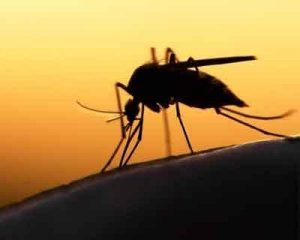- Home
- Editorial
- News
- Practice Guidelines
- Anesthesiology Guidelines
- Cancer Guidelines
- Cardiac Sciences Guidelines
- Critical Care Guidelines
- Dentistry Guidelines
- Dermatology Guidelines
- Diabetes and Endo Guidelines
- Diagnostics Guidelines
- ENT Guidelines
- Featured Practice Guidelines
- Gastroenterology Guidelines
- Geriatrics Guidelines
- Medicine Guidelines
- Nephrology Guidelines
- Neurosciences Guidelines
- Obs and Gynae Guidelines
- Ophthalmology Guidelines
- Orthopaedics Guidelines
- Paediatrics Guidelines
- Psychiatry Guidelines
- Pulmonology Guidelines
- Radiology Guidelines
- Surgery Guidelines
- Urology Guidelines
Dramatic rise in Vector borne Diseases - A threat to US

Vectorborne diseases which are major causes of death and illness are increasing at an astounding pace in the U.S.In fact, the number of vector-borne illnesses in the U.S. has tripled from 2004 to 2016, rising to nearly 650,000 cases according to CDC.The most common vectorborne pathogens are transmitted by ticks or mosquitoes, including those causing Lyme disease; Rocky Mountain spotted fever; and West Nile, dengue, and Zika virus diseases.
The researchers analyzed data reported to the National Notifiable Diseases Surveillance System for 16 notifiable vectorborne diseases during 2004– 2016; findings were tabulated by disease, vector type, location, and year.
It was found that a total 642,602 cases had been reported. The number of annual reports of tickborne bacterial and protozoan diseases more than doubled during this period, from >22,000 in 2004 to >48,000 in 2016. Lyme disease accounted for 82% of all tickborne disease reports during 2004–2016. The occurrence of mosquito-borne diseases was marked by virus epidemics. Transmission in Puerto Rico, the U.S. Virgin Islands, and American Samoa accounted for most reports of dengue, chikungunya, and Zika virus diseases; West Nile virus was endemic, and periodically epidemic, in the continental United States.
The CDC researchers concluded that Vectorborne diseases are a large and growing public health problem in the United States, characterized by geographic specificity and frequent pathogen emergence and introduction. Differences in distribution and transmission dynamics of tickborne and mosquito-borne diseases are often rooted in biologic differences of the vectors. To effectively reduce transmission and respond to outbreaks will require major national improvement of surveillance, diagnostics, reporting, and vector control, as well as new tools, including vaccines.
For more details click on the link : DOI: http://dx.doi.org/10.15585/mmwr.mm6717e1

Disclaimer: This site is primarily intended for healthcare professionals. Any content/information on this website does not replace the advice of medical and/or health professionals and should not be construed as medical/diagnostic advice/endorsement or prescription. Use of this site is subject to our terms of use, privacy policy, advertisement policy. © 2020 Minerva Medical Treatment Pvt Ltd